When you begin setting up your Google Search Console account, you will be prompted to set up a property.
When setting up your property, you have two options:
- Domain property.
- URL prefix property.
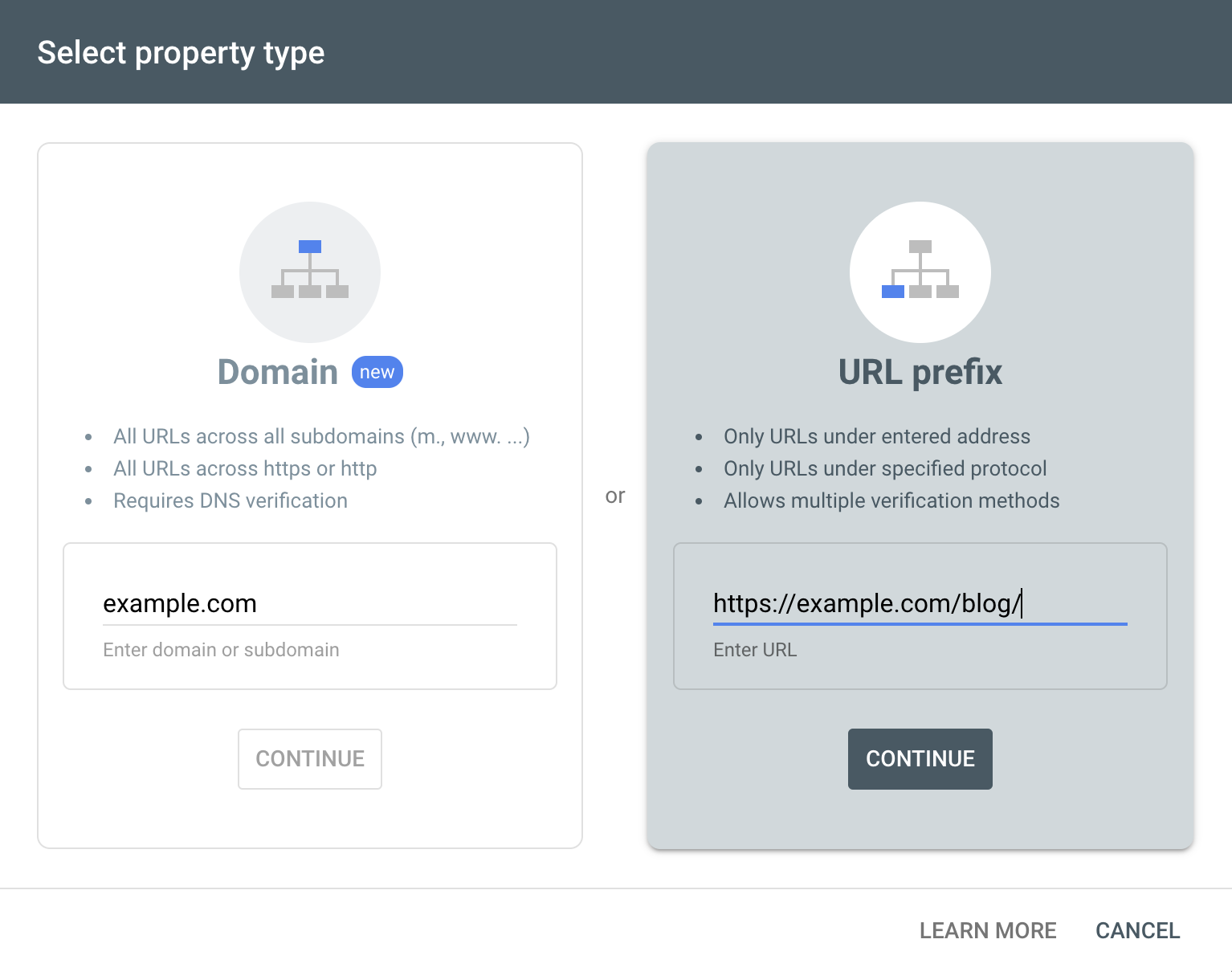
Understanding the difference between these two property types is crucial. In this article, we will cover those differences, explain when to use a domain property and when to use a URL prefix property.
What is a domain property?
A domain property within Google Search Console is a property that is used to verify and manage all URLs on your website across all subdomains and protocols. This property type allows you to see performance data, index coverage, and other reports for every single variation of your site, including:
- http://yourdomain.com
- https://yourdomain.com
- http://www.yourdomain.com
- https://www.yourdomain.com
- All other subdomains (sub.yourdomain.com, etc.)
It’s important to note that we have listed domain options for HTTP and HTTPS protocols. Although there should not be an instance where your website responds to both HTTP and HTTPS, one should always be redirected to another. Google confirmed back in 2014 that HTTPS was a ranking signal, so we would always recommend your site use the HTTPS protocol, with the HTTP version redirecting.
Pros of using domain properties
Using a domain property gives you a comprehensive view of your entire domain, including all subdomains and protocols. This allows you to manage and monitor everything in one place. We use a domain property for our Google Search Console tracking at SEOTesting, so the data in the screenshot below is across all possible protocols.
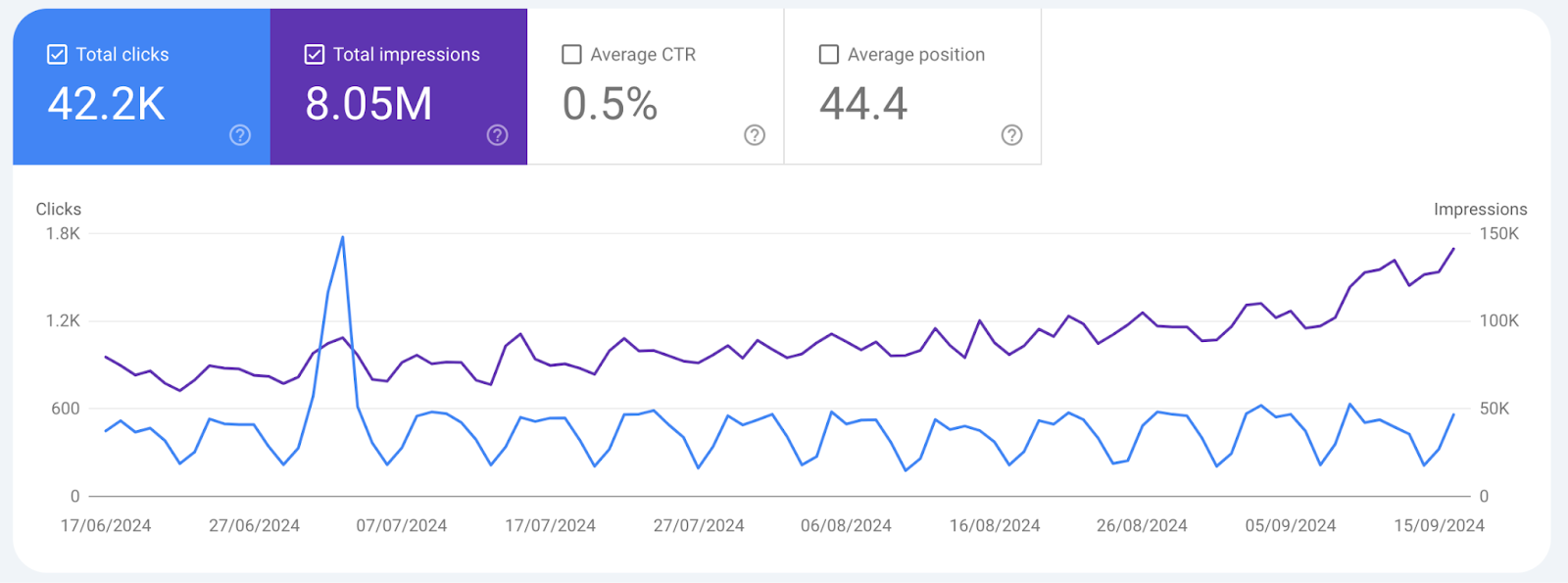
The domain property type will also help you simplify management by automatically including new subdomains and protocol changes without needing manual updates or separate properties.
Assuming your site is set up for best practice and using the HTTPS protocol, a domain property will report URLs that serve HTTP pages that appear in the search result pages and to users. This gives you the opportunity to fix these with the necessary URL redirects to the HTTPS versions.
It’s also worth noting that the DNS verification process for domain properties, although a little more technical, is more secure and ensures you control the entire domain.
This approach also helps you to future-proof your reporting, as any changes to your site structure will automatically be covered under the domain property, ensuring consistent monitoring and data collection.
Cons of using domain properties
Domain properties, like anything, have drawbacks. DNS verification can be more complex and technical, especially for users unfamiliar with DNS settings.
Additionally, grouping all subdomains and protocols can make it harder to analyze the data if the site uses subdomains. This lack of granular control means you can’t easily isolate a particular version of your website for detailed monitoring.
We also need to mention that if your DNS settings are altered, the verification can fail, and you’ll need to re-verify your ownership, which can be inconvenient during hosting changes or migrations.
What is a URL prefix property?
A URL prefix property within Google Search Console refers to a property that tracks and reports data for one specific URL path and its related subdirectories. This means data will only be tracked for one protocol and one specific domain version, which allows you to manage and monitor a more targeted version of your website, such as:
- https://www.yourdomain.com (www subdomain version)
- https://yourdomain.com/blog (blog subfolder)
So, if we wanted to track the performance of our blog only, we could do that with a URL prefix property:

Each URL prefix property applies only to the exact format of the URL you entered. It won’t cover other subdomains, variations of the URL, or different protocols unless you create separate properties for each version.
Pros of using URL prefix properties
One of the key benefits of using a URL prefix property when setting up your website in Google Search Console is that it reports on data for a specific section of your site. You can monitor just one version, such as https://www.yourdomain.com, without being overwhelmed by data from other subdomains or protocols. This is especially useful if you want to focus on a particular part of your site, such as a blog or a shopping section.
Another advantage is the more straightforward verification process. Unlike domain properties, which require DNS verification, a URL prefix property can be verified using more accessible methods, such as:
- Uploading a HTML file
- Adding a meta tag to your site
- Linking to Google Analytics
This makes it more accessible for users unfamiliar with technical settings like DNS configurations.
Cons of using URL prefix properties
The main drawback of a URL prefix property is its limited scope. It only covers the specific version you define during the setup process, which means you’ll need to set up separate properties for other site variations, like the www and non-www versions. This can lead to more time spent managing multiple properties.
Another downside is that if your site’s structure changes, new subdomains are added, or protocols are switched, these won’t automatically be included under the existing URL prefix property. You’ll have to set up new properties for each version, making the process more complicated and leading to a fragmented view of your site’s performance.
The key differences between domain and URL prefix properties
This next section will provide the critical differences between a domain property and a URL prefix property within Google Search Console, focusing on coverage, verification, granularity, and integration.
Coverage
Domain properties cover all URLs linked to your domain, including subdomains like ‘www.’ and ‘blog.’ and protocols like http and https. For example, if your site has:
- https://www.example.com
- https://example.com
- https://blog.example.com
A domain property will track all these URLs in one place.
On the other hand, URL prefix properties only cover a specific part of your site. If you set up a property for https://www.example.com, you will only see data for that URL and its subpages. To track other areas, you’d need a separate property.
A quick tip
If you have your Google Search Console property set up as a domain property, and you want a quick way of monitoring different sections of your website, you can use SEOTesting’s content group feature:
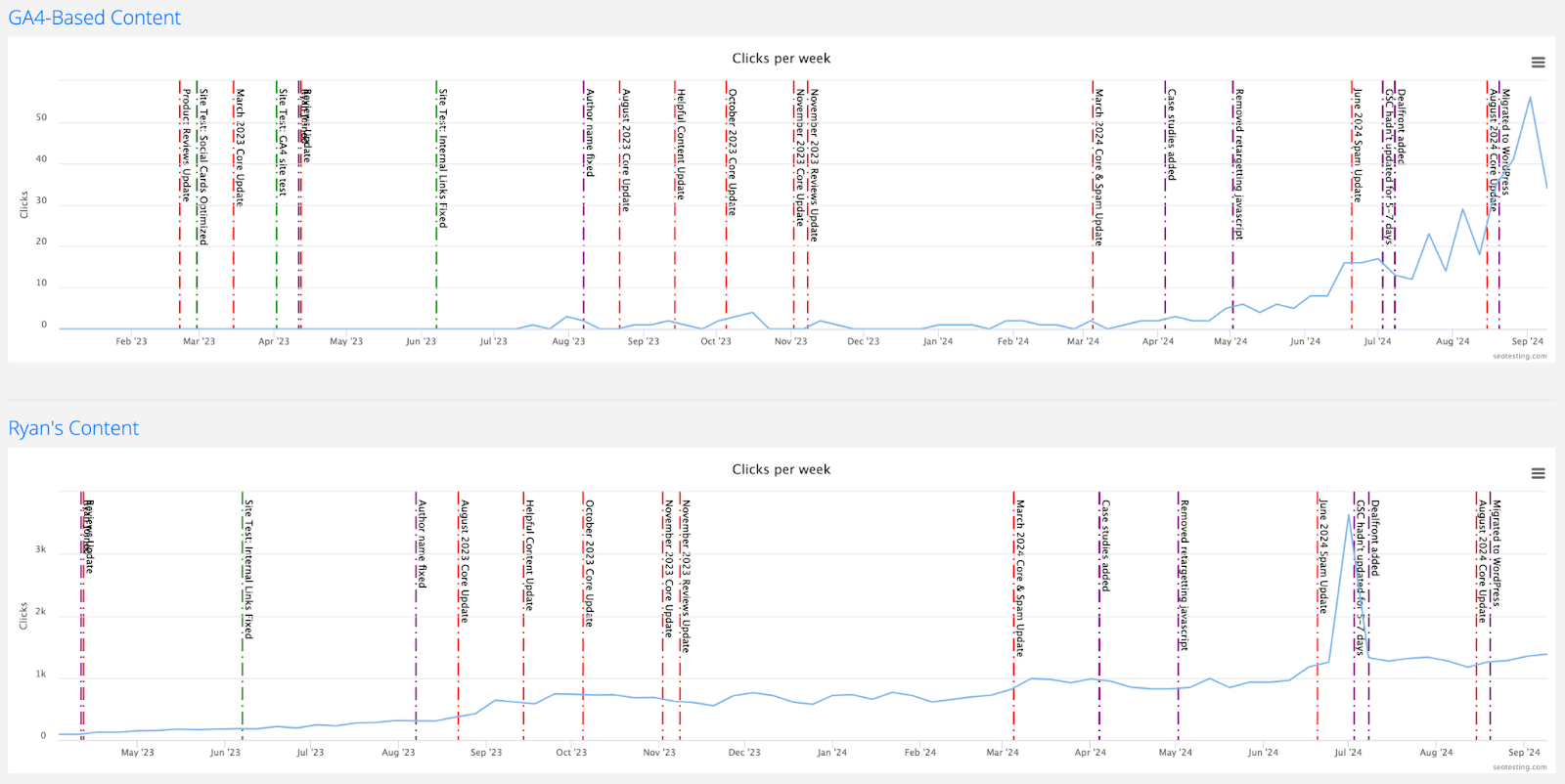
Remember that this is a domain property we use, but we have set SEOTesting up to track different sections of our blog, such as the content written by me and our library of GA4-based content.
Verification
Domain property verification requires DNS record verification, which will allow Google Search Console to ensure that ownership is verified at the domain level. This is more secure, but it may involve more technical steps.
On the other hand, URL prefix properties offer multiple verification methods such as HTML file upload, meta tags, or integration with either Google Analytics or Google Tag Manager. These methods are more flexible and straightforward but only apply to the specific URL prefix being verified, not the entire domain.
Granularity
Domain properties provide a broad view of the entire domain, covering all subdomains, such as:
- www.example.com
- blog.example.com
- shop.example.com
- support.example.com
This is useful for monitoring large websites in a single, unified report. However, since the data is aggregated across the site, it can be challenging to analyze the performance of specific sections. For example, if you want to track how your blog is performing separately from your online store, this broad scope may become a limitation.
URL prefix properties provide more targeted tracking. You can create separate properties for different subdomains, protocols, or specific directories. This allows you to isolate and monitor performance metrics for each section. For example, if you’re running a content marketing campaign for your blog, setting up a URL prefix property for blog.example.com or a specific directory lets you focus on the performance of your blog without data from other site sections impacting the results.
Integration
Domain properties combine data across the entire domain into a unified view, providing an overview of all site variations. This can help manage large sites with multiple subdomains or protocols. In contrast, URL prefix properties are designed to track and manage specific sections of a site. This is useful if different teams manage different areas or if you want to monitor certain sections independently.
For example, if you manage a large ecommerce site with multiple subdomains, such as:
- shop.example.com
- blog.example.com
- support.example.com
A domain property lets you view the data for all these subdomains together, giving a complete view of your site’s performance. This can help identify site-wide trends, such as overall traffic growth or domain-wide crawl errors.
However, if your marketing team focuses on the blog while your sales team works on the online store, URL prefix properties allow each team to monitor their specific section. This approach ensures that teams can access the data most relevant to their work without filtering out unrelated information.
When should I use a domain property?
A domain property is a solution for webmasters that need to monitor and manage all subdomains and protocols under a single view, such as businesses with large, complex websites that operate across multiple subdomains.
Using a domain property within Google Search Console simplifies the task of tracking performance across these different site variations rather than setting up and managing various properties for each subdomain.
This consolidation allows you to monitor critical metrics like rankings, traffic, and indexing without navigating between different accounts or dashboards. Whether users access your leading site or one of its subdomains via other means, you can ensure that all performance data is captured, providing a comprehensive overview of your site’s health and success.
Ultimately, you should use a domain property to simplify your workflow, ensure consistency, and maintain a unified picture of your entire domain’s activity. By encompassing all variations into a single property, you reduce complexity and improve the accuracy and efficiency of sitewide performance tracking.
When should I use a URL prefix property?
Using a URL prefix property in Google Search Console allows tracking and analysis of specific website sections. This can be useful when different site areas, such as a blog, an online store, or the main site, are managed separately.
A URL prefix property provides data segmentation, allowing you to focus on tracking particular sections, including specific protocols. It also integrates with Google Analytics, offering segmented performance data for traffic, behavior, and user interactions particular to the chosen site areas.
If you need to monitor specific subdomains or sections of your website, a URL prefix property in Google Search Console can be set up to assist with that level of tracking.
How do you add either a domain property or URL prefix property to Google Search Console?
Adding a domain or URL prefix property within Google Search Console is simple.
To start, head to your Google Search Console dashboard. If you have login credentials, then enter these to get to your dashboard:
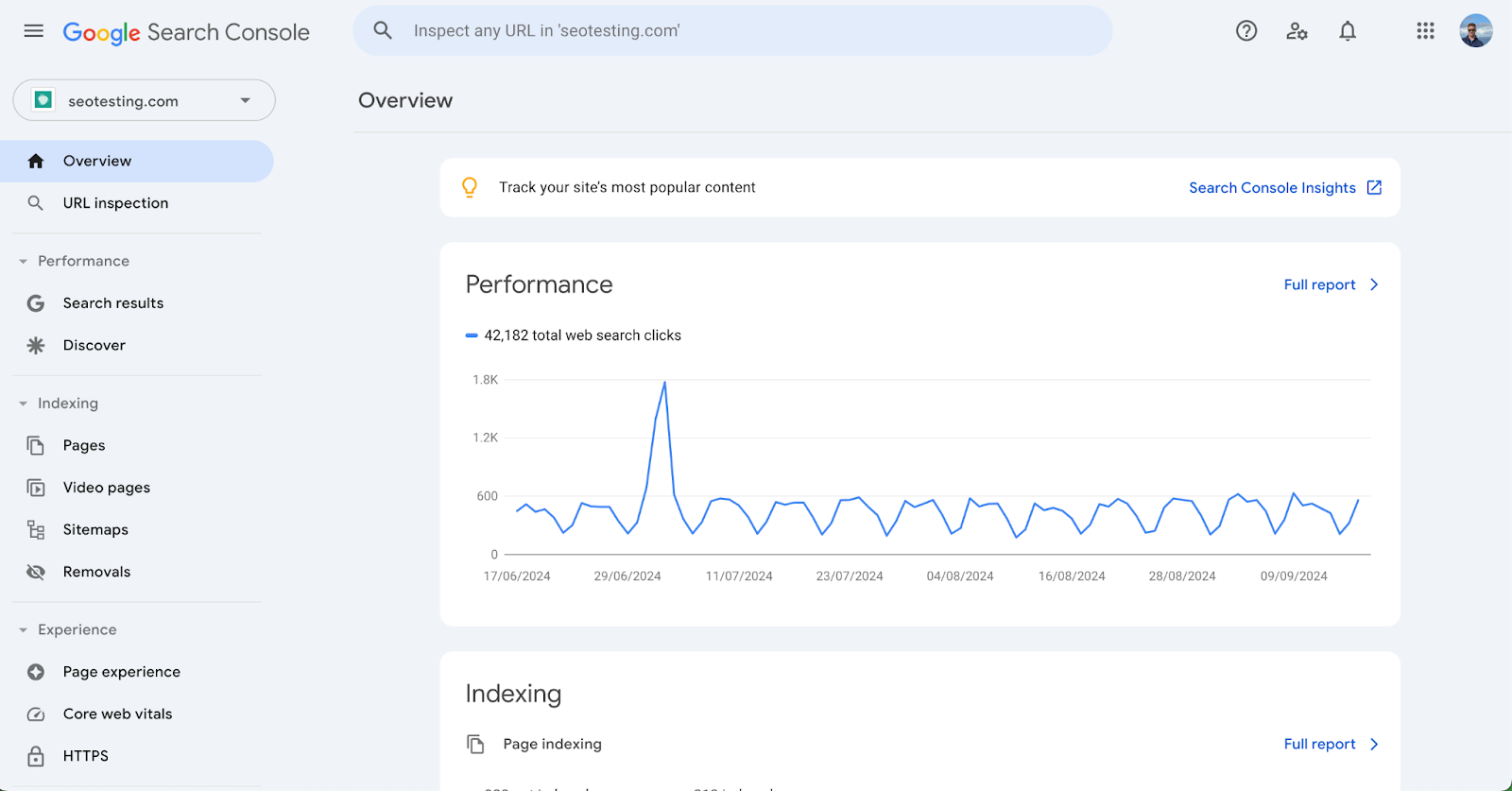
If you’re brand new to Google Search Console, sign in with the Google account you will use:
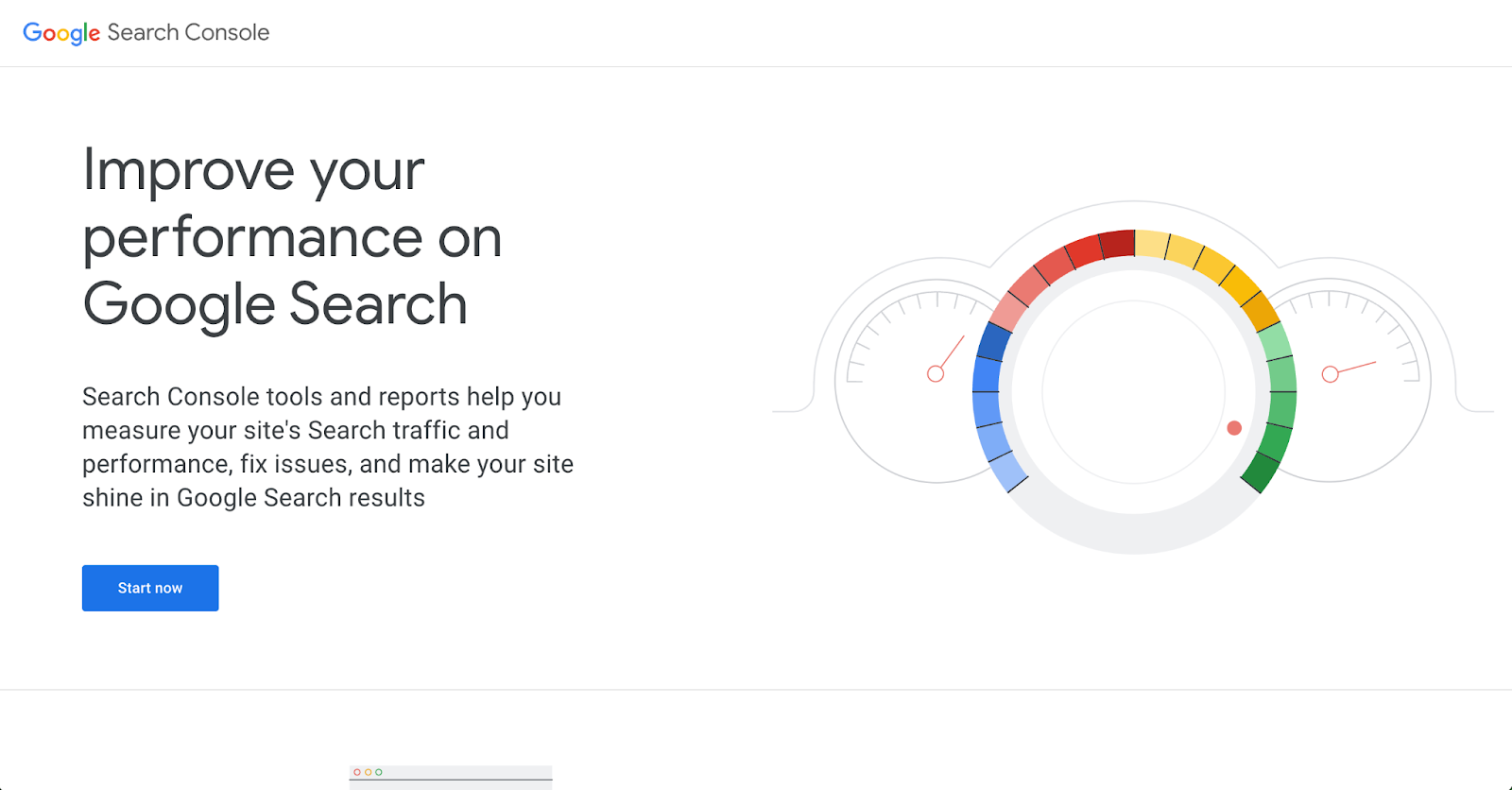
Your next step, once you have logged into your existing Google Search Console account or signed in for the first time, is to select the “+ Add property” icon, which you will find on the dropdown menu in the top-left-hand corner of your dashboard:
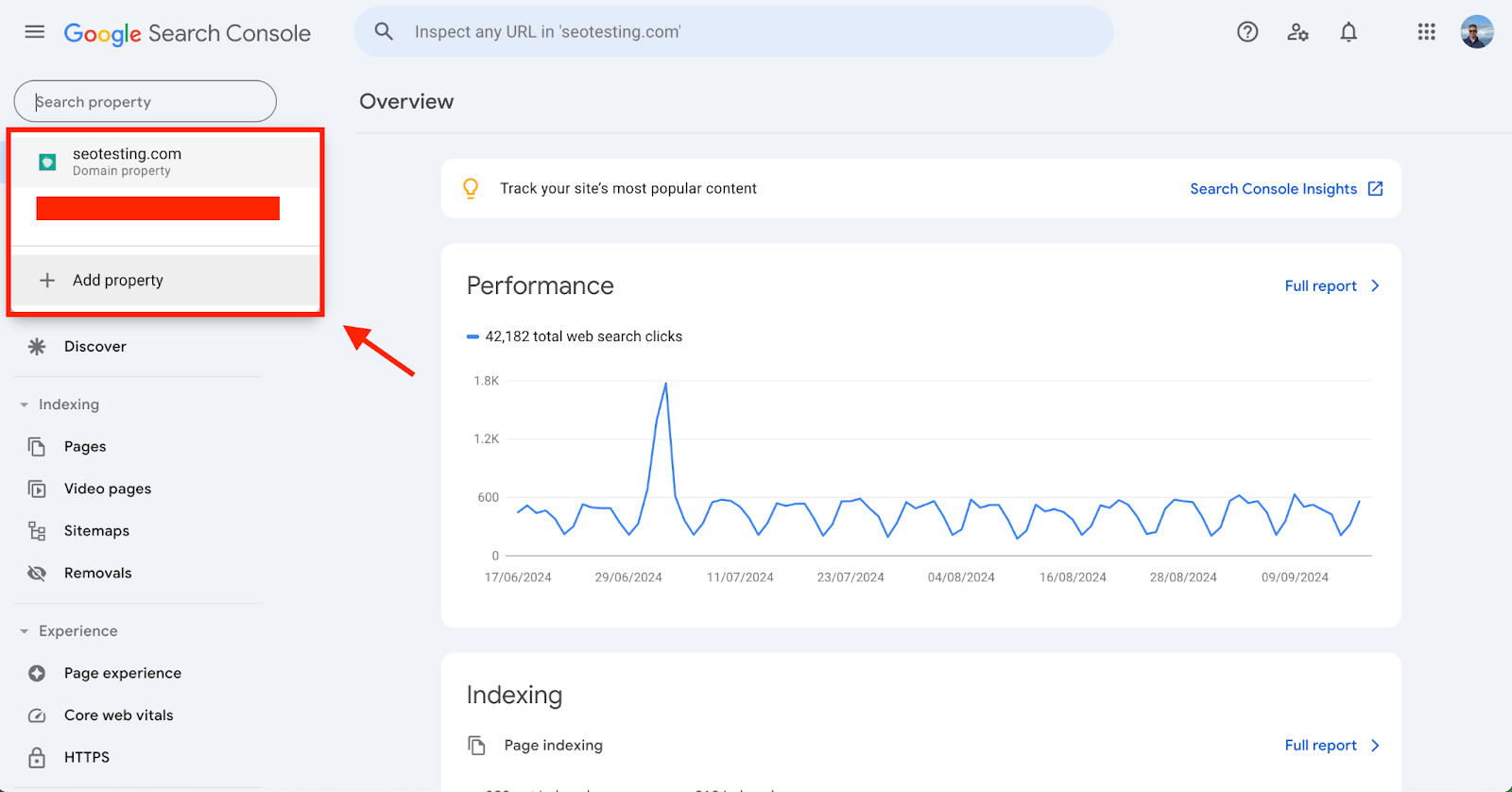
Now, you need to choose the property type you wish to add. Once you have made the decision, simply click on the option you want to go with:
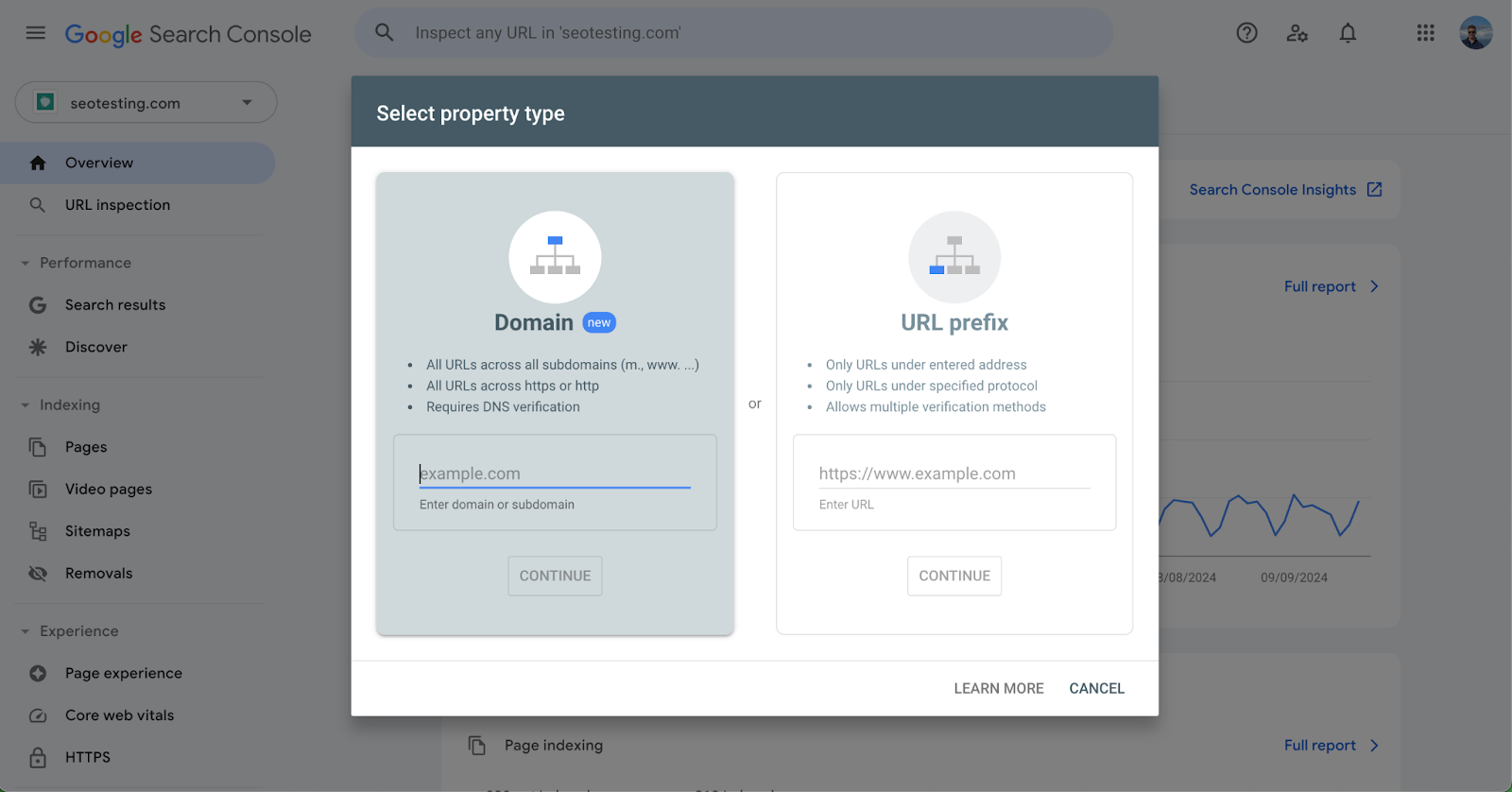
You’ll then be prompted to choose a verification method. Follow the steps provided by Google Search Console during the setup wizard. Once verified, data should start appearing on your new property within a few days.
Remember that Google Search Console is generally approximately 48 hours behind, so you may need to wait this long before your new property starts getting any data.
Domain vs URL Prefix FAQs
What is the main difference between a domain property and a URL prefix property?
A domain property tracks all subdomains and protocols of your site. A URL prefix property tracks only one exact version of your site.
When should I use a domain property?
Use a domain property if you want to monitor your entire site including all subdomains and protocols in one view.
When is a URL prefix property better to use?
Use a URL prefix property when you want to track only one section of your site like your blog or shop.
Which type is easier to verify?
URL prefix properties are easier to verify. You can use a meta tag or HTML file. Domain properties need DNS verification.
Can I use both types for one site?
Yes. You can set up both property types for the same website if you want different views of the data.
Wrapping things up
Choosing between a domain property and a URL prefix property in Google Search Console depends on your specific needs and website structure.
Domain properties provide a comprehensive overview of your website, making them ideal for larger, complex sites with multiple subdomains and protocols. On the other hand, URL prefix properties offer more focused, granular control and are better suited for smaller sites or when monitoring specific website sections.
By understanding the strengths and limitations of each property type, you can tailor your approach to best fit your site’s goals, ensuring efficient tracking and valuable insights into your website’s performance.
If you want to use your Google Search Console data better, give SEOTesting a try. We simplify SEO testing and allow you to make better, more data-driven decisions. We have built tens of custom reports that make reporting easier. We have a 14-day free trial, so no credit card is required, so sign up today!

